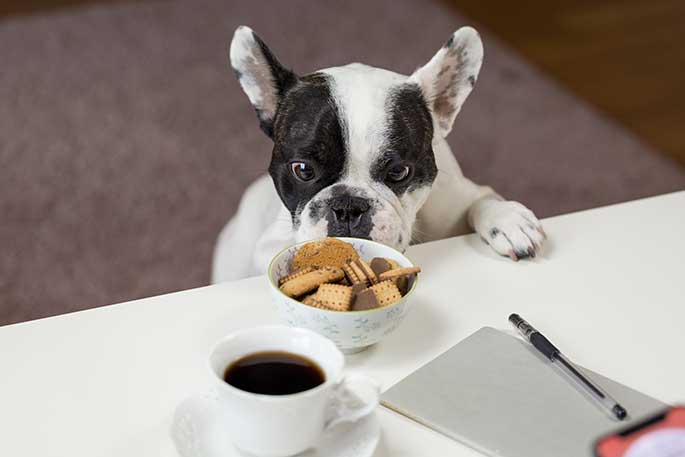
For decades, pets continue to evolve from being a mere distraction to becoming a beloved part of human households. Pet populations are increasing along with human populations.

Read More:
- How Often and How Much to Feed a Dog – Feeding Guidelines and Advice
- How to Perfectly Plan Out Your Dog’s Diet
- Should Puppies Eat Dry or Wet Food?
- Dog Nutritional Requirements: Guide to Understand Your Dog’s Diet Needs
- Can Dogs Eat Cat Food? Can Cats Eat Dog Food?
Dogs remain to be the most loved pets, and if you happen to own one, then you are certainly among the luckiest pet owners in the world. It’s not just because dogs are man’s best friend. But, dogs can also be a real source of joy.
They know exactly how to express their love and affection to their pet owners and this characteristic is not something that can be experienced with other kinds of pets. This is why dogs have to be given the utmost care and if it is your first time to own one read further to know what are those things to consider when feeding them.
Portion and Quantity
There are several factors to consider when deciding on the quantity of food to give to your dog. The professionals from Woof Bark Growl suggest that your dog’s exercise level, health, age, and reproductive status must be taken into consideration when feeding.
You may see a feeding guideline listed on the label of the packaging of the dog food. However, these recommended feeding guidelines may not be accurate most of the time. Besides, you cannot expect consistency among different manufacturers as these guidelines also vary from one brand to another.
It is important to note that when reading the percentage of food in its packaging, it usually includes the moisture that’s present in it. This makes the quantity of food you give to your dog so tricky to determine. Therefore, when in doubt, always consult your dog’s veterinarian.
The best way to know the right portion size for your dog is to first determine his healthy size. You may ask your veterinarian about this if you do not have any idea. Dogs that are couch-potatoes require different portion sizes than those that are physically active.
You can tell that your dog is of a healthy size if you can feel his ribs but are not able to see them. Their bodies should be round enough not to make those ribs too apparent, but not too fat that you can hardly feel their ribs when you touch them. Healthy-sized dogs have chests that are lower to the ground than their abdomen. However, without portion control, the ideal healthy size of your dog will not be achieved.
Free feeding makes dog food available to your pet all the time. Unfortunately, this can only make your dog gain more weight, which also increases his risk of becoming obese. Commercial dog foods may indicate the portion size according to your dog’s weight. However, as mentioned earlier, this may not hold all the time.
Sometimes, the indicated amount of food on the label is more or less than what your dog exactly needs. Ask for help from your veterinarian to determine the exact amount of food that your dog needs each feeding. Make sure the amount you give is satisfying but not too indulgent so that your dog stays healthy.
Breed Size
Your dog’s breed size is also another important thing to consider when feeding. Dog food guides will usually have listed categories of breed-specific factors. Medium to large-breed dogs has metabolic rates that are much faster than dogs of a small breed. This goes to say that not all dogs have the same amount of nutritional requirements. Small-breed puppies will mostly have a faster metabolism.
This would mean that they also need a higher amount of water and calorie intake. Remember that small-breed dogs also need nutrients from vegetables, whole grains, and fruits. Always choose dog foods that provide fewer yet balanced and healthy ingredients. So, as your dog enters adulthood, his immune system will also become stronger while also requiring a metabolic need. Make sure that your dog gets a balanced meal every day.
Medium-breed puppies have the kind of metabolic system that is less aggressive compared to what small-breed dogs have. However, the metabolic system of medium breed dogs is still considered higher compared to large-breed dogs. So, make sure that your pet is being fed with foods that contain rich sources of proteins, minerals, vitamins, and fatty acids. Keep in mind that compared to large-breed dogs, these medium-breed dogs have smaller stomachs. Therefore, it is important that whatever you feed them, has been nutrient-dense to also ensure they will have enough energy to stay active.
On the other hand, large-breed dogs require extensive nutritional needs. They need to be fed with natural dog food that contains high-quality nutrients such as fiber, proteins, minerals, and vitamins. They are the most active type of dogs, thus they need the most nutrient-dense food as well. They are also the type of breed that is most at risk when it comes to heart problems, bloating and diabetes.

Food Allergies
In addition to food intolerance, dogs may also experience food allergies. Signs of a food allergy may vary from one dog to another. Some of these signs include gastrointestinal problems, chronic gas, chronic diarrhea, and chronic ear and skin inflammation. Some dogs that have food allergies may also be licking their feet more often or experiencing itch in their rear end.
So, once you notice that your dog has food allergies be wary about giving him meat from pork, fish, rabbit, lamb, and chicken. He may also be sensitive to beef, soy, dairy, egg, and wheat. Note that dogs usually have more than one food that they are allergic to.
Wet vs. Dry Food
Choosing between dry or wet dog food does not have to be a daunting task. You can feed your dog these two types of food. Each of these types brings with it its corresponding benefits. For example, wet dog foods have higher water content, which can be beneficial, especially if your dog has issues regarding hydration.
Wet foods are also ideal for pets that have problems chewing, such as misaligned jaws and tooth loss. On the other hand, dry foods can aid in cleaning your dog’s teeth as these have been formulated to scrape away tartar buildup. Plus, dry foods are also easy to store, convenient, and economical.
More than ninety percent of pet owners see their pets as an indispensable part of the family. The 2019 Statistics reveal that 85 percent of pet owners see their pets as sources of unconditional love. So, keep loving and taking care of your pet. The rewards are beyond what money can buy.
Popular Posts:



